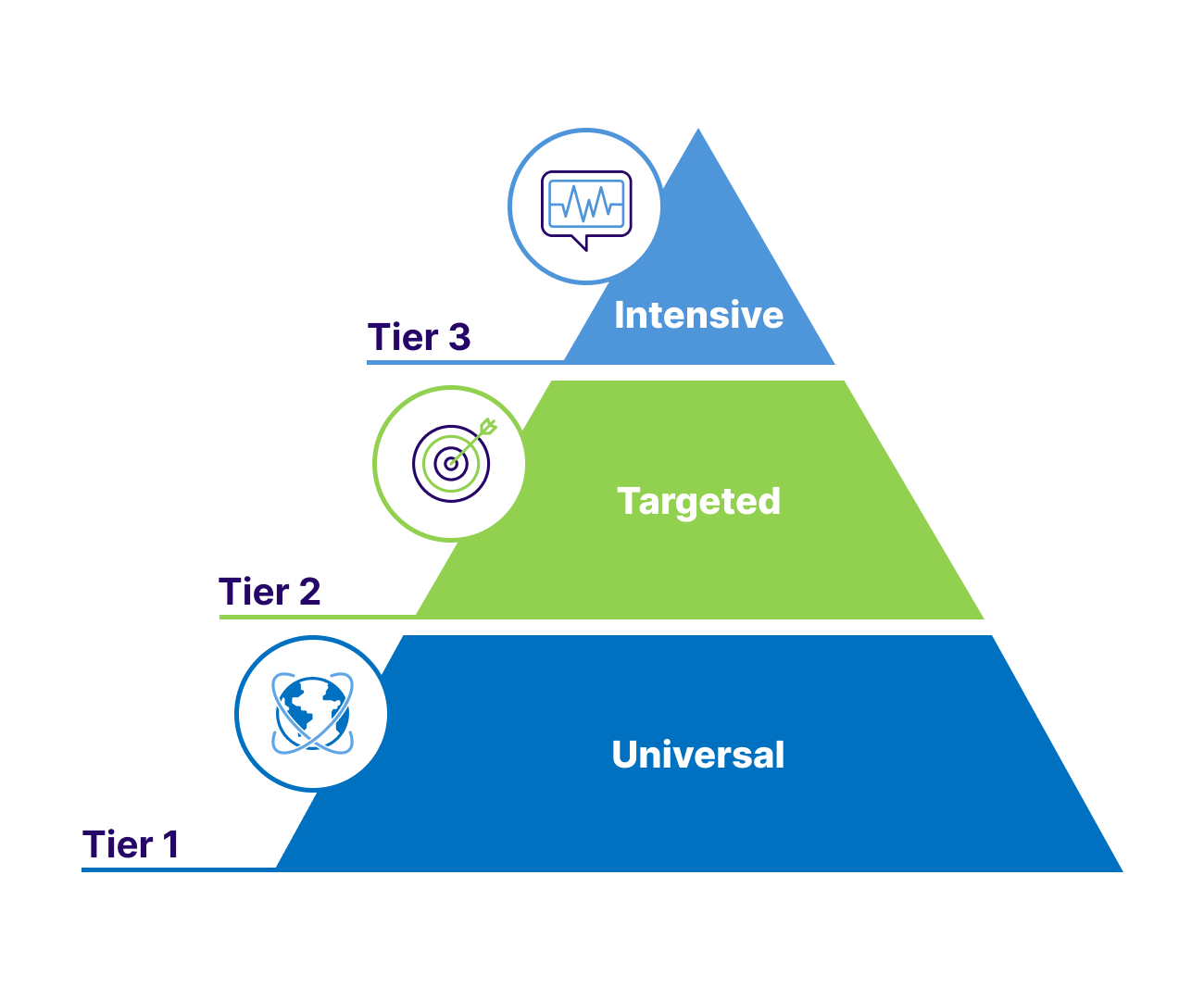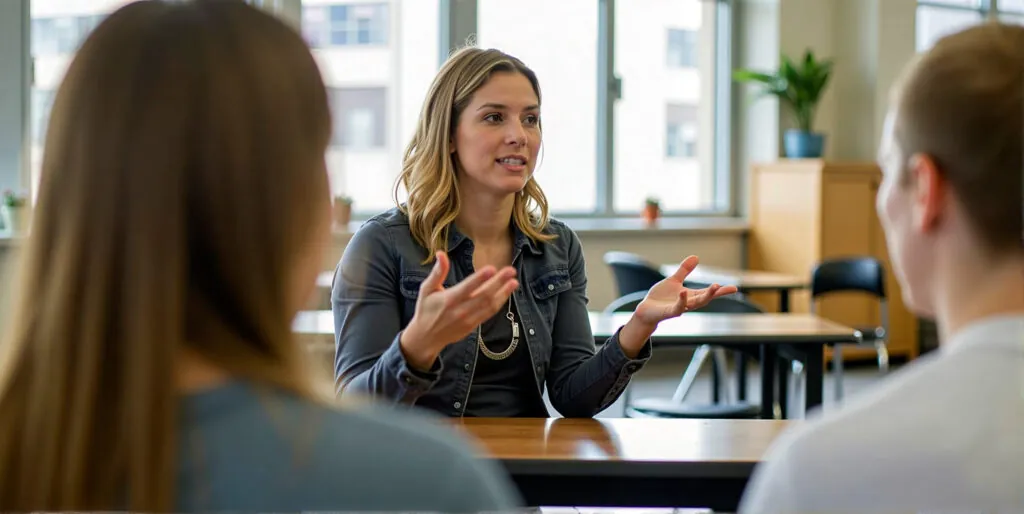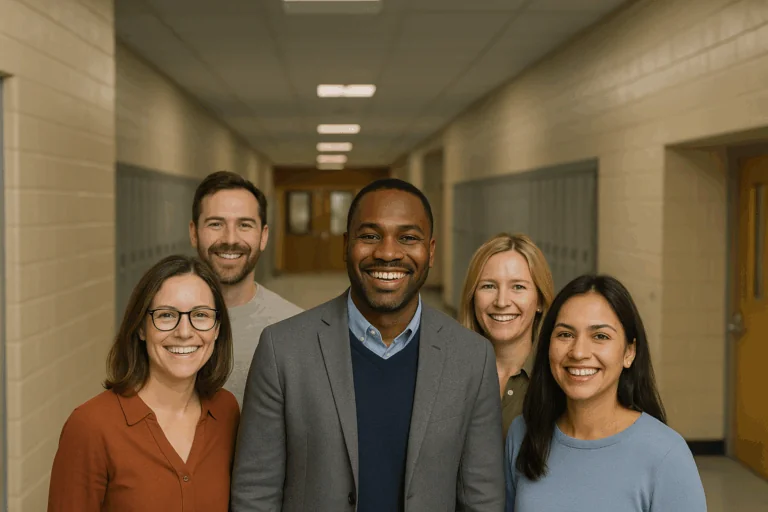Most people don’t realize that choosing a career in education means learning way more than just subject content and how to connect with students. The field is packed with acronyms and specialized terms that aren’t part of everyday conversation—many of which you probably never even noticed when you were a student yourself! From instructional strategies to policies and legal requirements, there’s a whole language educators have to master along the way.
In this article, you’ll dive into the three tiers of the MTSS-B Pyramid, learn how they differ, and discover practical strategies to implement at each level—Tiers 1, 2, and 3. The goal is to answer the question, “What is the MTSS-B Pyramid?” and provide a clear understanding of how its tiered supports are designed to meet the needs of all students.
Before diving into what the MTSS-B Pyramid, it’s important to have an understand of the MTSS-B structure. MTSS, or Multi-Tiered System of Support, is a structured yet flexible framework designed to help meet the academic, behavioral, and social-emotional needs of all students.
It’s a layered system that might seem complex at first, but at its core, it’s about making sure every student gets the right level of support at the right time. Through teamwork, data-driven decisions, and targeted interventions, educators work together to create an environment where all students can thrive.
A significant component of MTSS is the MTSS Pyramid or MTSS Triangle, which is often associated with MTSS-A (academic) or MTSS-B (behavior). The MTSS Pyramid, as it relates to student behavior, is a visual representation of the 3-tiered framework used to demonstrate the continuum of function-based supports available at each tier, ensuring students receive the appropriate level of intervention based on their needs. If you’re curious about the strength of your MTSS systems, consider conducting the Tiered Fidelity Inventory (TFI) to get a baseline on your system strength.

Building Blocks of MTSS Pyramid
Tier 1: Universal Supports
At the foundation of the MTSS-B pyramid is Tier 1, or Universal Supports. This tier includes strategies and structures that benefit all students, creating a positive and structured learning environment. Strong Tier 1 universal support ensures that students receive a solid foundation, reducing the need for more intensive interventions. Tier 1 supports are implemented by classroom teachers, administrators, and support staff. These are classroom-wide and building-wide supports that all learners can access.
Moving up the pyramid from Tier 1, Tier 2 provides targeted function-based interventions to support their social-emotional and behavioral skill development. At the top of the pyramid, Tier 3 offers intensive, individualized interventions. A well-established Tier 1 is essential for the success of Tiers 2 and 3, as the system relies on a strong base to support students effectively.
Take a look at these practical examples of Tier 1, or universal, supports that may be present in your MTSS-B System. When developing your MTSS-B system, a key consideration is how to maximize the resources you already have to implement strategies and interventions at every tier.
Tier 1 Universal Support Examples
When strong foundational support and best practices are in place, 80% – 90% of students experience success, representing the base, or foundation, of the MTSS-B pyramid. Practical examples of Tier 1 supports include:
- Social skills instruction – Teaching all students essential interpersonal and self-regulation skills and providing opportunities for practicing these skills
- Positive, Proactive Discipline – Encouraging appropriate behavior through structure supportive strategies
- Clear Behavior Expectations – Establishing, teaching, and reinforcing school and classroom rules
- Active Supervision and Monitoring – Ensuring student engagement and safety through consistent observation
- Positive Reinforcement Systems – Implementing classroom and school-wide incentives for positive behavior
- Firm, fair, and corrective discipline – Addressing misbehavior with consistency and equity
- Effective classroom management – Using research-based strategies to maintain an organized and productive learning environment
- Academic Support – Providing structured, high-quality instruction that meets diverse learning needs
A well-implemented Tier 1 system strengthens student success and minimizes the need for more intensive interventions.
Tier 2: Targeted Interventions
Even with strong Tier 1 universal support in place, some students need additional help to succeed academically and behaviorally. This is where the targeted interventions represented at Tier 2 of the MTSS-B Pyramid become essential, offering additional support for students who need more than the universal strategies provided at Tier 1. While these students may not require intensive interventions, they can still benefit from focused, function-based strategies designed to address their specific needs.
To effectively deliver these targeted interventions, schools must first be able to identify which students require this additional level of support. Implementing a structured process for recognizing and responding to students’ needs is critical to ensuring that Tier 2 supports are timely, appropriate, and effective.
The Center on PBIS provides resources on existing data sources within your system to help determine whether a student needs Tier 2 support (Positive Behavioral Interventions & Supports, n.d.).
Additionally, Behavior Advantage offers tools to support MTSS-B teaming practices, including a free MTSS-B Support Request Form to help guide you through this process. These tools can strengthen your school’s ability to respond proactively and positively, ultimately promoting greater student success.
Available resources may differ by school or district, but these practical Tier 2 interventions are adaptable to nearly any school setting.
Tier 2: Targeted Interventions Examples
Tier 2 targeted social-emotional and behavioral supports provide additional assistance for the 10%–15% of learners who need more than Tier 1 universal strategies to address identified skill gaps. Examples of Tier 2 interventions include:
- 2X10 Relationship Building Strategy – Intentional non-academic or behavior related conversation for 2 minutes per day for 10 days 2X10 Strategy in Action
- Check-In Check-Out – structured system to foster relationships and promote positive behavior by providing routine feedback and positive adult attention
- Small Group Social Skills – Targeted instruction to build essential social skills
- Behavior Contract – A written agreement outlining target behaviors, clear expectations, specific reinforcements, and defined consequences
- Self-Monitoring – Teaches students to track and regulate their own behavior
- Simple BIP – Function-based written plan that outlines strategies to reduce challenging behavior while focusing on teaching and reinforcing desirable behavior Use this Free Template to get started today!
The goal of Tier 2 social-emotional and behavioral interventions is for students to develop strategies to regulate their behavior and, over time, succeed with only Tier 1 universal support. The data collected from these interventions helps guide decisions about what each student needs next. In the PBIS framework, data is a key tool for shaping interventions and improving student success. The MTSS-B team will review this information to decide whether a student should continue with Tier 2, start phasing out support, or, if necessary, move to Tier 3 for more intensive interventions.
Tier 3: Intensive Interventions
The tip of the MTSS-B Pyramid is Tier 3, intensive interventions. These interventions are implemented when Tier 1 and Tier 2 supports do not fully meet a student’s social-emotional and behavioral needs. Data from the function-based Tier 2 supports will inform the decision to move the student to Tier 3, if necessary. These interventions typically involve expanding the support team to include additional stakeholders, such as outside service providers or agencies, and increasing the involvement of school-based professionals (e.g., school psychologists, counselors, etc.).
Although valuable, resources like mental health therapy and school psychologist support may not be available in every school. Therefore, it is crucial for MTSS-B teams to understand the resources available in their school and community and to have Tier 3 interventions ready to support students when needed.
Tier 3: Intensive Interventions Examples
Tier 3 interventions target 3%-5% of students in a school and are represented at the tip of the MTSS-B Triangle. These students have not responded to Tier 1 and Tier 2 interventions and require more intensive, individualized support to be successful.
- Increased frequency, intensity, and duration of interventions: Providing more frequent, focused, and longer sessions to address the student’s specific needs.
- Functional Behavior Assessment (FBA) and Behavior Intervention Plan (BIP): FBA is a process for identifying the causes and functions of a student’s behavior, while a BIP outlines strategies and supports to address these behaviors. Explore our practical guide to writing a BIP and strengthen your understanding of what makes an effective BIP.
- Reduced group size for small group interventions: Implementing interventions in smaller groups to allow for more individualized attention and targeted support.
- 1:1 support for interventions and skill-building: Offering personalized, one-on-one support to help the student develop specific skills and behaviors.
Putting it All Together
Understanding what the MTSS pyramid is isn’t enough to make positive, systematic change to support learner needs across all tiers. MTSS encompasses the philosophical belief that all students should have equitable access to high-quality instruction and targeted support, based on data-driven decision-making and a collaborative, problem-solving approach. This belief needs to be a driving factor in establishing your MTSS-B system.
- Start with a solid Tier 1 foundation, which will meet most of your student’s needs and help identify those who truly need additional support.
- Solid teaming practices and a bank of pre-built function-based interventions will ensure your team is prepared to support your learners who require Tier 2 targeted interventions.
- Consistent data collection and analysis will support your team in determining if Tier 3 intensive interventions are required, if Tier 2 targeted interventions should continue, or if the Tier 2 plan should fade and the student can be successful with Tier 1 universal support.
If you want to learn more about the relationship between MTSS and Beahvior, read our blog: Understanding Behavior in Multi-Tiered System of Support (MTSS).
Supporting MTSS-B with Behavior Advantage
Behavior Advantage can help you and your team achieve success with learners who need support at Tiers 2 and 3 by providing a clear framework through the MTSS 3-Tiered approach to supporting behavior. The pyramid visually outlines this approach, emphasizing a functional perspective to guide targeted interventions and support.

Talk to one of Behavior Advantage’s BCBAs to find out how we can help you and your team support your Tier 2 and Tier 3 learners!









